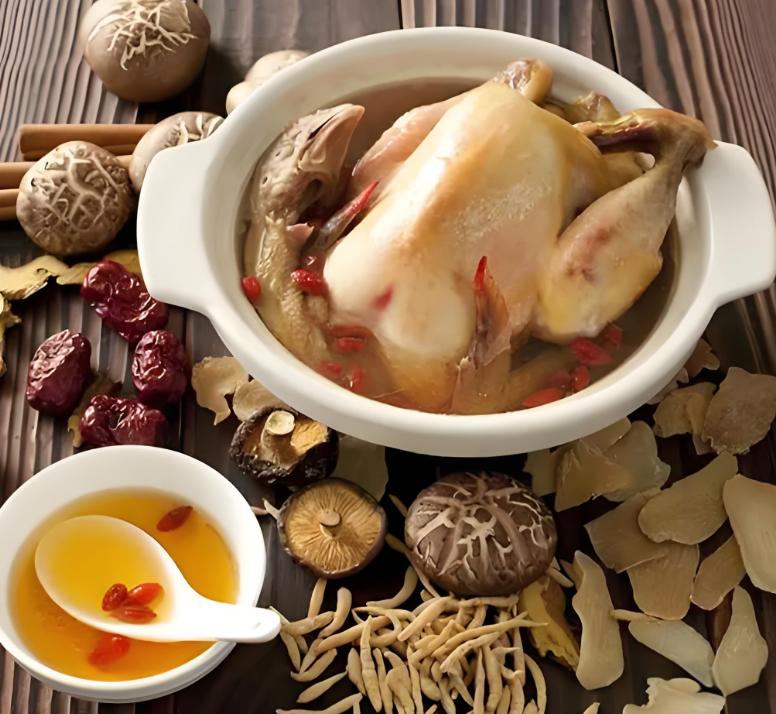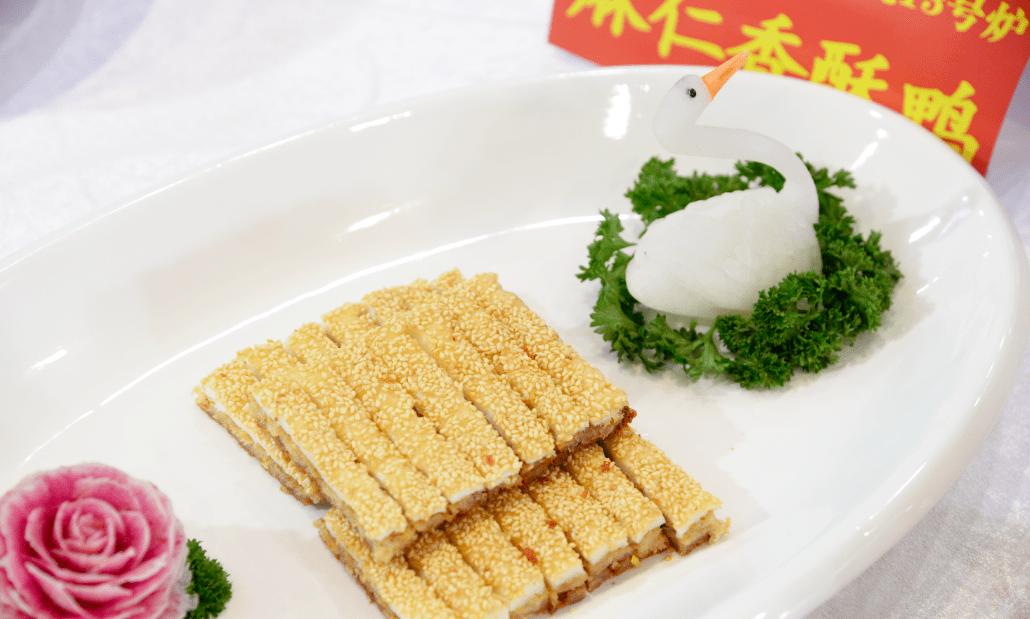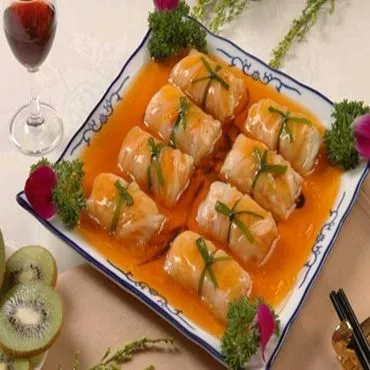Eating in Changsha
Hunan Food Briefing
Hunan Cuisine, lovingly known as Xiang Cuisine, stands tall as one of China's renowned Eight Culinary Traditions. With its refined presentation and signature hot-and-sour tang, it rivals the fiery flavors of Sichuan Cuisine in intensity and charm. Changsha food is renowned nation-widely and in Changsha, the provincial capital, locals proudly claim the title of China's most passionate food enthusiasts, dedicating countless hours to the art of eating. Here, every corner brims with tantalizing aromas, promising a feast that lingers long after the last bite.
From bustling street food stalls to upscale eateries, Changsha's vibrant culinary scene sets taste buds ablaze. Iconic snacks like the infamous Stinky Tofu and the beloved Sisters' Rice Balls at the legendary Huogongdian (Fire Palace) tempt visitors with bold, unforgettable flavors. For seafood lovers, the spicy shrimps at Nanmenkou are a fiery delight. No matter your choice, the city's diverse offerings promise to thrill and satisfy every palate.
Hunan, a landlocked province, owes its fiery cuisine to a generous use of chili, garlic, and the intriguingly named "strange sauce," each ingredient igniting dishes with life and vigor. This boldness extends to its cultural heritage, too. Chairman Mao, a proud Hunan native, famously quipped that eating more chilies strengthens one's revolutionary spirit—a playful nod to the deep-seated Chinese belief that food shapes not just health but also character.
Changsha's specialties embody the heart and soul of Xiang Cuisine. From the fragrant Dong'an Chicken to the robust Chili Smoked Meat and the tangy Cold Rice Noodles drenched in spicy sauce, the city offers a cornucopia of flavors. Sweet indulgences are no afterthought here; honey-infused desserts like water chestnut puddings and cassia-flower cakes offer a delicate balance to the heat. For those less keen on spice, comforting dishes like tender dumplings (Jiaozi), savory pickles, and fluffy egg creations provide solace.
In Changsha, every meal tells a story—a tale of bold flavors, cherished traditions, and culinary passion that transforms a visit into an unforgettable gastronomic adventure.
Famous Local Food
Famous Local Dishes
Three-Layer Stuffed Chicken(San Ceng Tao Ji三层套鸡)

The Three-Layer Stuffed Chicken is a legendary dish that hails from the heart of Changsha, Hunan. As one of the representatives of Changsha food, and known for its distinctive flavor and exquisite craftsmanship, it has won the hearts of countless food lovers. The origins of this dish trace back to the late 1920s, when Lu Diping governed Hunan. At that time, his concubine, Lady Sha, suffered from frequent headaches. A local doctor suggested a unique remedy: a combination of a sparrow, a pigeon, and a black-bone hen, steamed together with Gastrodia tuber to brew a nourishing soup. Inspired by this recipe, a renowned Changsha chef named Liu Sanhe transformed this medicinal concoction into the now-famous Three-Layer Stuffed Chicken. Liu’s innovation quickly made the dish a sensation, earning admiration from the upper echelons of society.
The preparation of Three-Layer Stuffed Chicken is not particularly complex, but it requires a delicate touch. First, the three types of poultry—black-bone hen, pigeon, and sparrow—are meticulously cleaned, plucked, and gutted. Each bird is then briefly boiled for half an hour, after which they are set aside to cool. The sparrow’s head and feet are removed, and the sparrow is carefully placed inside the pigeon’s body. The pigeon, in turn, is stuffed into the black-bone hen, keeping its natural form intact. To hold the shape, the hen’s head is propped up with bamboo skewers, and its legs are tied in place. The stuffed hen is then placed in a large clay pot, water is added, along with a pinch of salt, some Gastrodia tuber, goji berries, and other medicinal herbs. The pot is brought to a vigorous boil, then simmered on low heat for about two hours until the dish is tender and fragrant. Once done, the Three-Layer Stuffed Chicken is carefully removed, maintaining its original form, and is ready to be served.
The result is a dish bursting with layered flavors. The unique aroma of each ingredient blends harmoniously, creating a complex and savory taste. The tender meat of the hen, the delicate texture of the pigeon, and the firm flesh of the sparrow all contribute to the dish's diverse mouthfeel. The fragrant herbal notes from the Gastrodia tuber and goji berries further elevate the taste, making every bite an unforgettable experience. Not only is Three-Layer Stuffed Chicken a culinary masterpiece, but it also boasts significant nutritional value. The meats are rich in high-quality protein, while the medicinal herbs offer health benefits, such as nourishment and rejuvenation. This dish is not just a treat for the palate but also a tonic for the body.
Three-Layer Stuffed Chicken is suitable for most people, particularly those in need of nourishment, such as the elderly, patients, and those in recovery. However, it is best avoided by individuals with excessive internal heat, phlegm accumulation, or those suffering from obesity. This dish is not only a symbol of Changsha food and Hunan’s culinary excellence but also a cultural heritage passed down through generations. With its unique flavor and sophisticated preparation, it has become an iconic dish in Changsha and Hunan. Whether served at family gatherings or grand banquets, Three-Layer Stuffed Chicken is sure to be the highlight of the table.
Crisp Sesame Duck (Maren Xiangsu Ya麻仁香酥鸭)

Among the many culinary delights of Changsha and Hunan, Crisp Sesame Duck stands out as a unique treasure. This dish combines the distinct techniques and flavors of Channgsha food and Hunan cuisine, earning its place as a signature dish of Changsha. Its exceptional preparation and delicate flavor make it irresistibly delicious, leaving a lasting impression on anyone who tries it.
To prepare Crisp Sesame Duck, a variety of ingredients and a series of intricate steps are required. The duck is first marinated with yellow wine, salt, sugar, Sichuan peppercorns, and scallions and ginger, then steamed until 80% cooked. After cooling, the duck is deboned and shredded. Next, the shredded meat is mixed with minced fat and egg batter, spread evenly on a greased tray, and fried until golden. Finally, the dish is sprinkled with Sichuan pepper powder and sesame seeds, then drizzled with sesame oil to finish. These seemingly complex steps are precisely what give Crisp Sesame Duck its irresistible fragrance and flavor.
When you taste Crisp Sesame Duck, the first thing that captivates you is its appearance, fragrance, and taste. The golden, crispy exterior contrasts perfectly with the tender and flavorful interior. The aroma of Sichuan pepper and sesame adds another layer of depth, enriching each bite. Every mouthful bursts with the rich, bold flavors of Hunan, much like the region's vibrant landscapes and warm, welcoming people.
Beyond the flavor, preparing Crisp Sesame Duck requires a delicate balance of coordination and professional skill. Expert chefs meticulously chop the meat, blend it with the fat, and carefully control the frying time and temperature to ensure perfect results.
Crisp Sesame Duck is not just a dish; it is a cultural expression. It embodies the unique flavors of Hunan and reflects the meticulousness and craftsmanship of the people who make it. By savoring Crisp Sesame Duck, you can experience the charm and cultural heritage of Hunan. So, if you're traveling to Changsha or Hunan, don't miss the chance to taste this iconic dish—it’s an experience you won’t forget.
Non-Yolk Eggs with Mushroom (Huagu Wu Huang Dan花菇无黄蛋)
This traditional dish from Changsha has been a local favorite since the 1930s, earning a reputation that still delights diners today. The surprise? When you crack open the eggs, you'll find them yolk-free.
At first glance, a plate of eggs paired with mushroom soup might seem unremarkable. But the moment you take a bite, the smooth, velvety egg white surprises you—it's free of yolk, filled instead with a rich chicken broth that melts in your mouth.
The magic happens when the chef carefully creates a tiny hole at the bottom of each eggshell to remove the yolk. Then, the delicate egg whites are filled with a prepared chicken soup and a touch of salt before being sealed back into their shells and cooked to perfection. The result is a dish with an exquisite, silky texture and a savory, comforting taste that feels like a culinary secret.
Spicy Chicken Cubes (Mala Zi Ji麻辣仔鸡)
This dish is perhaps the quintessential Changsha delicacy, a true embodiment of the city's culinary spirit. Legend has it that if you’ve never tasted this dish, you haven’t truly experienced Hunan cuisine. It's the flavor that defines the region, packing a punch with its bold, fiery zest.
The preparation may sound simple—chicken diced and stir-fried with chili pepper, capsicum, vinegar, and Shaoxing wine over a high flame—but don’t be fooled. Achieving the perfect balance of spice, tang, and savory goodness requires a chef’s touch. The dish should shine with a vibrant, glossy color and a spicy heat that tingles on the tongue, yet doesn’t overpower the other flavors. It’s a delicate dance of ingredients, and while the recipe is straightforward, perfecting it takes skill and experience.
For the most authentic experience, there’s no better place to savor this iconic dish than at Yuloudong Restaurant, where the fiery flavors of Changsha come alive with every bite. Here, you’ll taste not just a meal, but a piece of the city’s soul—bold, daring, and unforgettable.
The King’s Farewell to His Concubine (Bawang Bie Ji霸王别姬)
A timeless classic of Changsha food and Hunan cuisine, The King’s Farewell to His Concubine has endured for over a century, keeping its place as a beloved traditional dish. With a history steeped in legend, it features the finest ingredients—turtle (soft-shelled turtle) and chicken—paired with fragrant mushrooms, cooking wine, garlic, and other carefully selected seasonings. This dish is crafted using a two-step process: first, it is simmered, then steamed to perfection.
According to the legend, during the tumultuous war between Chu and Han, Xiang Yu, the famous king of Chu, found himself trapped by Liu Bang’s forces, surrounded by the haunting sounds of his enemies. In a bid to lift his spirits, his beloved concubine, Yu Ji, prepared this special dish using turtle and young chicken. After Xiang Yu tasted the dish, he was greatly cheered, his spirits lifted and his resolve renewed. It is said that this dish was born during that fateful time and hence, it was named The King’s Farewell to His Concubine.
Both chicken and turtle are considered nourishing foods, especially in the autumn, making them the perfect combination for a hearty, revitalizing dish. The chicken and turtle are simmered together for 20 minutes to allow their rich flavors to meld, creating a deeply satisfying and flavorful broth. The addition of carefully selected dried chili peppers infuses the tender fish meat with a spicy kick, while the chicken pieces absorb the essence of the turtle, creating a balanced harmony of savory, rich, and subtly spicy flavors.
The delicate fragrance of the chicken and the tender, juicy turtle combine to create a dish that lingers in your memory long after the last bite. With its deep nourishment and unforgettable taste, The King’s Farewell to His Concubine isn’t just a meal—it’s a story, an experience, and a taste of history.
Spicy Shrimps (Kouwei Xia口味虾)
If the Fried Stinky tofu of Huogongdian (Fire Palace) with a 250 year old history tells of the city's past, Kou Wei Xia (Stir-fry Spicy Shrimp) another popular choice near the area of Nanmenkou and Shahejie is a present day story.
The thing that earns the street its reputation is Kou Wei Xia (Stir-fry Spicy Shrimp), another popular market food for Changsha people. The shrimps are lightly boiled in hot water until they turn red. They are then sautéed in cooking oil, with hot chili, ginger, peppers, salt and garlic sauce, shallots and preserved bean curd for just twenty seconds when cooking wine and some water are added. The shrimps are then cooked for a further ten minutes to give them a spicy flavor. The resultant dish is spicy and hot, which is earns it a three peppers indicator on the menu which means it is the hottest. That's Changsha people's favorite! The king of the street is the Sixijie Restaurant on this dining street.
In addition, there are other delicious foods including duck dishes, cold dishes, soups, noodles and dumplings.
Every evening, an array of food stalls and shops near the area of Nanmenkou appear with bowls of bright color shrimps and none can resist the temptation! The crowed market will last late into the night until about three or even four o'clock.
Young Dragons Taking off Robes (Zilong Tuo Pao子龙脱袍)
Zilong Tuo Pao, also known as Stir-fried Eel Strips, is a traditional and iconic dish of Changsha food and Hunan cuisine, renowned for its vibrant colors and rich flavors. This dish features eel as the main ingredient and is a prime example of the exquisite artistry that defines the flavors of the region. The dish is visually stunning, with four colors—white, green, brown, and purple—harmoniously blending together. The taste is a perfect balance of salty, savory, and fresh, with a smooth, tender texture that makes every bite a delight. The eel strips are tender, aromatic, and satisfyingly spicy, making it a dish that leaves a lasting impression.
The name "Zilong Tuo Pao" is as captivating as the dish itself. According to legend, the process of preparing the eel involves delicate steps: the eel is cleaned, deboned, its head removed, and its skin carefully peeled off. This skin-removal step is especially significant, as it resembles the image of an ancient warrior removing his battle armor. Zilong refers to the legendary general Zhao Yun from the Three Kingdoms period, whose bravery and precision in battle are likened to the skillful peeling of the eel. The eel, with its graceful skin removal, resembles a young dragon, earning the dish its poetic and evocative name, which symbolizes both strength and elegance.
This dish requires meticulous preparation and skill. The fresh eel must first be processed carefully—deboned, peeled, and sliced into thin strips. Then, it is stir-fried with a variety of ingredients such as winter bamboo shoots, shiitake mushrooms, and ham. The stir-frying process is crucial—timing is everything to ensure the ingredients are cooked through yet retain their tender textures. Once perfectly cooked, the dish is seasoned with just the right amount of spices to bring out the best in each component.
Creating Zilong Tuo Pao demands a high level of culinary expertise. Eel meat is delicate, and its texture requires careful handling to preserve its integrity. The stir-frying process requires precise heat control—too high, and it will burn; too low, and the dish will lack flavor. Despite the seemingly complex process, once you master the techniques, you can create this flavorful masterpiece effortlessly.
In essence, Zilong Tuo Pao is not only a dish of exceptional taste but also one with deep cultural meaning. Its flavor is rich and nourishing, while its name evokes tales of bravery and precision. If you ever have the chance to try this exquisite dish, you’ll be captivated not just by its taste, but by the history and artistry it represents.
Famous Local Snacks
Fried Stinky Tofu (Smelly Tofu)
It’s the most renowned snack among all Changsha food. Don’t let the name "stinky" fool you—while this dish may seem a little intimidating at first, with its strong aroma and unpolished appearance, it’s a treat that surprises in the best way possible. The exterior is crisp and golden, with a hint of saltiness that awakens your senses, while the interior is incredibly tender, offering a contrast of textures that’s both comforting and satisfying. The deep-fried outside gives way to a soft, savory center that absorbs the rich, flavorful sauce, making each bite a delicious, umami-packed experience.
It’s said that even Chairman Mao Zedong, known for his discerning taste, sampled this iconic snack during his visit to the city in 1958. If it could win over such a legendary figure, it’s no wonder this dish has become a beloved part of local street food culture. While it may have an "acquired" fragrance, those who dare to try it often find themselves hooked by its addictive flavor.
So, if you're ready to step out of your comfort zone and experience a true local delicacy, don’t pass up the opportunity to try Fried Stinky Tofu in Changsha or other parts of Hunnan. Behind the name and the initial scent lies a snack that’s full of character, history, and a taste you won’t easily forget.
Huogongdian (Fire Palace) - featured snacks
In the central part of Pozi Jie Street, there is an eye-catching palace building, which was originally a temple where people offered oblation for a fire deity. Later, it becomes a gathering place for people and each year on the Fire Deity Day, they will hold sacrifice ceremony, temple fairs and other activities. Merchant traders, food stalls and shops which provide visitors with a variety of food constantly attend.
Today, the two-storied building has been decorated in a simple and antique style, in which are several snack shops and restaurants. It is the best place to sample the local snacks. Their most famous snacks include
Sisters' Rice Balls
These are a kind of rice balls with fillings of meat or sugar. The meatballs have mushroom pieces, meat, and spring onions inside and are made into the shape of pomegranate while the sweet balls have the fillings of sugar, dates, meat and sweet-scented osmanthus and often resemble a peach. On the day of happy events, the two are presented in contrasting colors to create a happy atmosphere.
Jiao Yan San Zi
This is a wheat pasta dish fried in oil. Noodles are made from flour, fat a little water and some salt together with spicy flavoring and a little sugar. These are twisted together and then fried in oil. It is a popular dim sum that the local people have for breakfast.
Wulipai – Steamed Dishes
Wulipai Street near the Changsha Railway Station is a good place to find homely dishes at reasonable prices. Jianjun Restaurant on this street is the king of steamed dishes. Here a variety of ingredients ranging from taro to fish, assorted meats and vegetables are steamed in earthen bowls. Two or three bowls of these dishes and rice can feed two couples well.
There are also many restaurants of this kind near Cai'e Nanlu.
Recommended Restaurants
For your reference, the following are the restaurants rated most popular by the locals:
Huogongdian (Fire Palace) RestaurantFirst Branch: No. 46, Pozi Jie Street, Changsha
Second Branch: No. 258, Laodong Lu Street, Changsha
Third Branch: No. 107, Wuyi Donglu Street, Changsha
Tel: (0731) 5813161, 5817591
Nameless Restaurant
Description: A small restaurant where you can taste the authentic Changsha dishes with the real taste that is so popular with local people; reasonable priced and recommended as the Number One for visitors.
Add: No. 547, third section of Furong Zhonglu, Changsha
Plum Garden Shrimps
Description: It is a time-honored restaurant, renowned to be the best of best place to sample the delicious Kou Wei Xia (Spicy Shrimps). Highly recommended!
Add: No. 42, Yinxing Lu, near the Bayi Bridge, Changsha
Yuloudong Restaurant
Description: It is this restaurant that brought the famous Spicy Chicken Cubes into the life of Changsha people and visitors throng to sample this typical dish.
Add: NO.9 East Wuyi Road, near the Changsha Railway Station
Tel: (0731) 2288288, 2288000
Travel Group's Choices:
Add: No. 1, Wuyi Xilu, Changsha
Tianxin Fried Chicken Shop
Add: No. 97, Jiefang Donglu, Changsha
Tel: (0731)4117378
Deyuan Bread
Add: No. 31 Huangxingnanlu Road, Changsha
Tel: (0731) 5817732
Circle Restaurant
Add: 29th floor, Zhongshan Hotel at No. 69, Huangxing Zhonglu, Changsha Century-Old Restaurants:
Dongjiujia at No. 9, Bayi Donglu, Changsha
Changsha Doupi at No. 44, Huangxing Zhonglu, Changsha
Shuangyan Wonton at No. 179, Huangxing Nanlu, Changsha
Tianjin Snacks at No. 73, Jiefang Lu, Changsha
Yangyuxing Noodle at Jiefang Lu, Changsha
Ganchangshun Noodle at No. 1, Zoumalou, Changsha, Tel: (0731) 4441529
Xinhualou Noodle at No. 20, Wuyi Xi Road,Tel: (0731) 2226068
This Euro-style restaurant provides western style food, ice cream and drinks. 150-200 yuan will cover enough for three people. The atmosphere is quite good.
Add: Furong Lu, Changsha Dyou Coffee [Western Style]
- Ma Die Er Western Restaurant (马迭尔西餐厅)
- Milano Italian Restaurant (米兰意大利餐厅)
- Blue Coast French Restaurant (蓝色海岸法国餐厅)
- Roman Holiday Western Restaurant (罗马假日西餐厅)
- California Red Cafe (加州红咖啡馆)
- New Yorker Steakhouse (纽约客牛排馆)
- Spanish Sunshine Restaurant (西班牙阳光餐厅)
- Bavarian German Restaurant (巴伐利亚德国餐厅)
- Red Brick American Restaurant (红砖美利坚餐厅)













